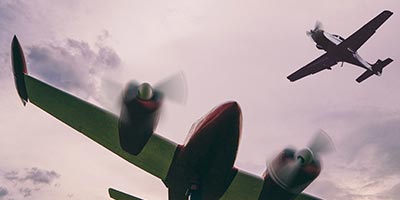

Collision avoidance, in the air and on the ground, is one of the most basic responsibilities of a pilot operating an aircraft in VFR conditions. We have compiled videos, articles, and instructional materials that will benefit pilots of all experience levels to improve safety and hone collision-avoidance skills. Please share this resource with others.

High altitude, high temperature, and high humidity create less dense or thinner air that contribute to high density altitude and impact aircraft and engine performance. Modify and use the AOPA Air Safety Institute’s Density Altitude Poster to quickly know the density altitude values at your airport on a standard day.
The AOPA Air Safety Institute periodically issues Safety Alerts to inform the aviation community of a critical air safety issue that presents a clear risk to pilots. View Alerts >
To increase aviation safety awareness and help reduce accidents, the AOPA Air Safety Institute periodically issues Safety Notices to remind pilots of significant safety topics. View Notices >
Participate in qualifying Air Safety Institute safety education to qualify for the AOPA Accident Forgiveness and Deductible Waiver Enhancement. Learn More >